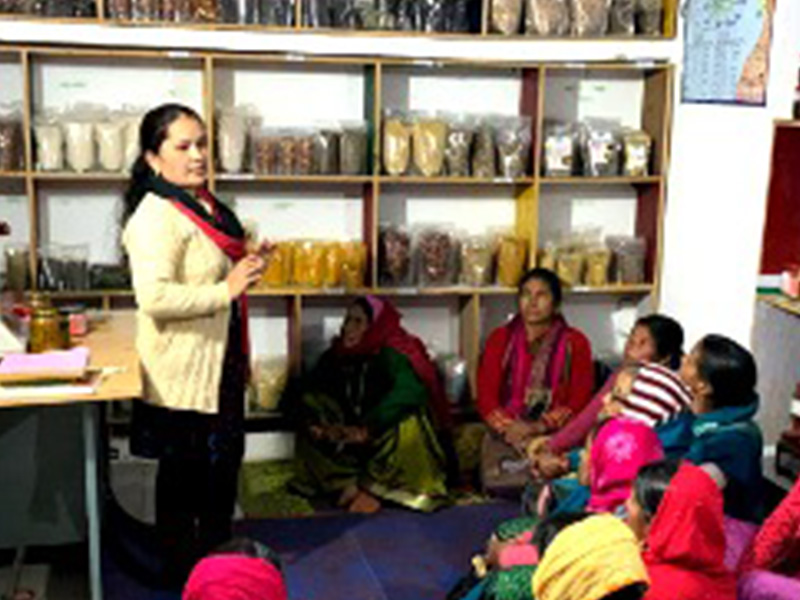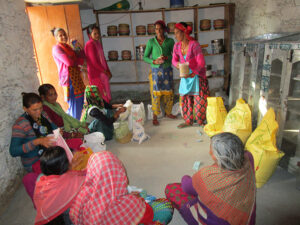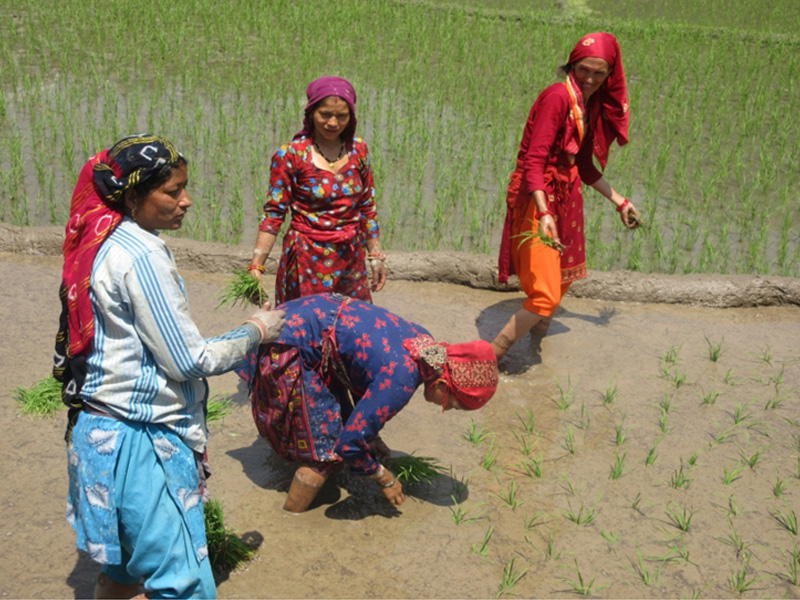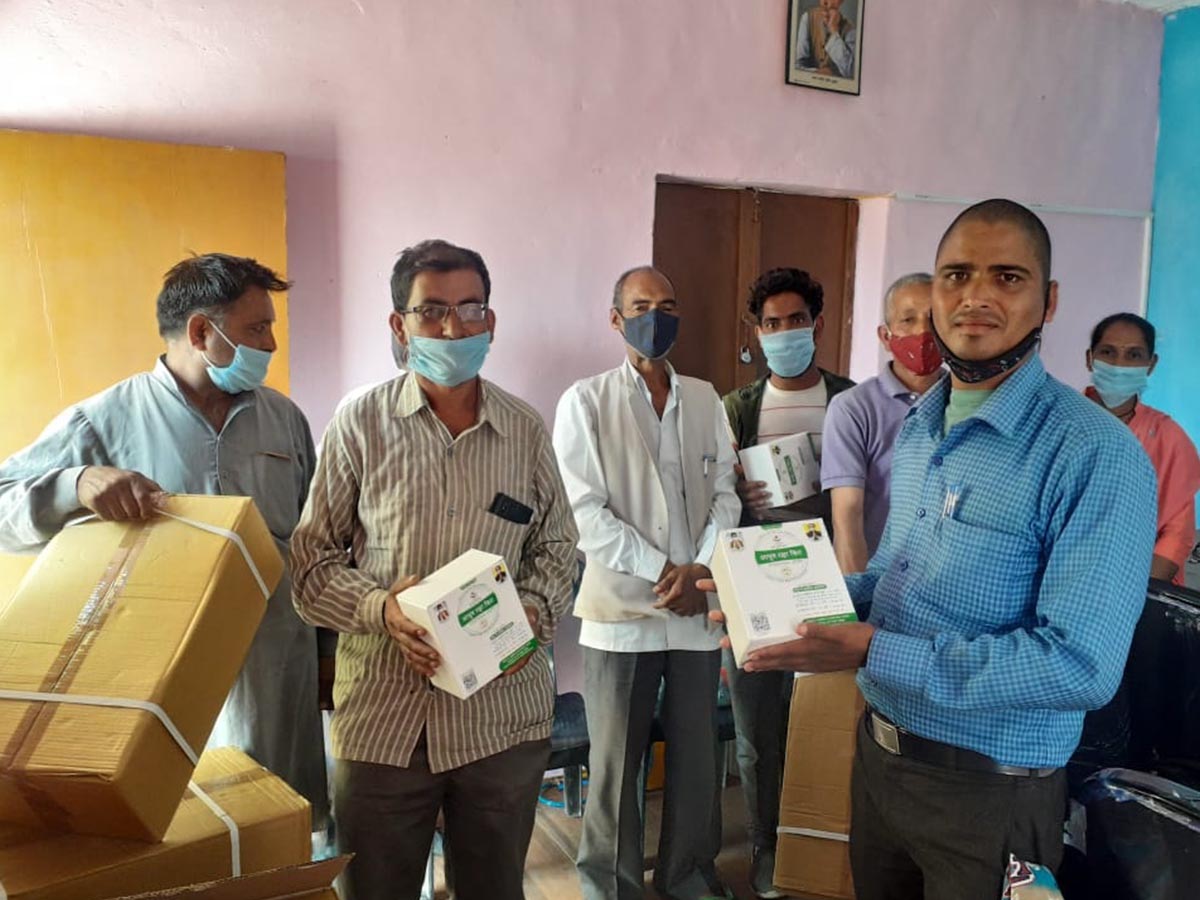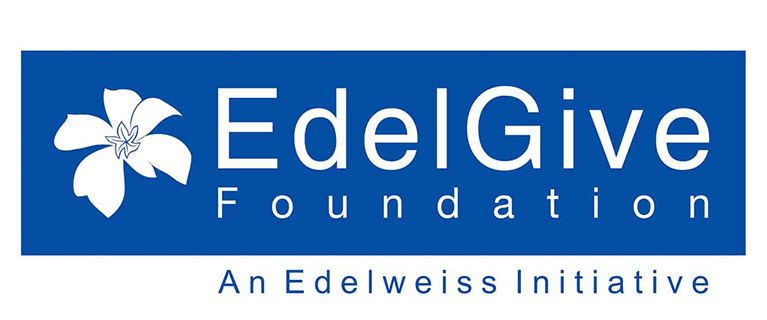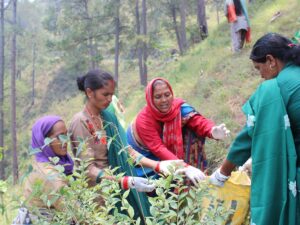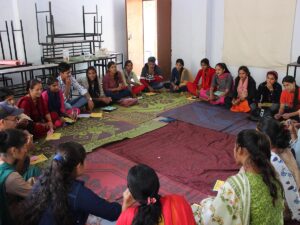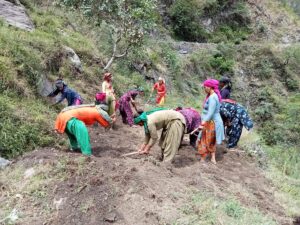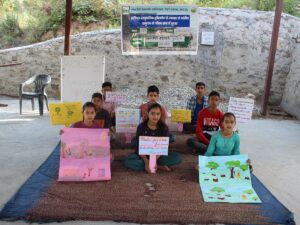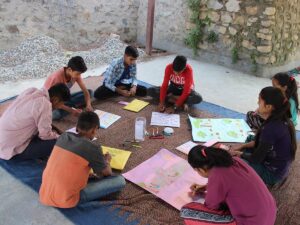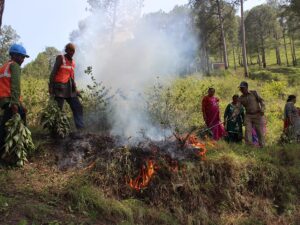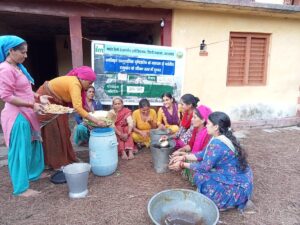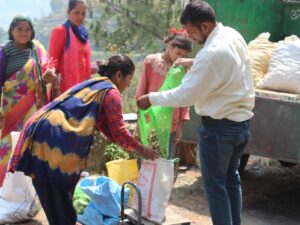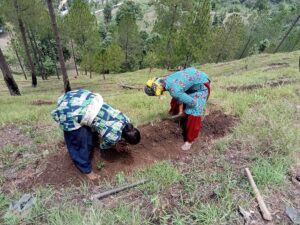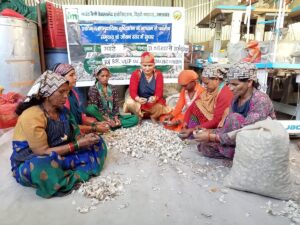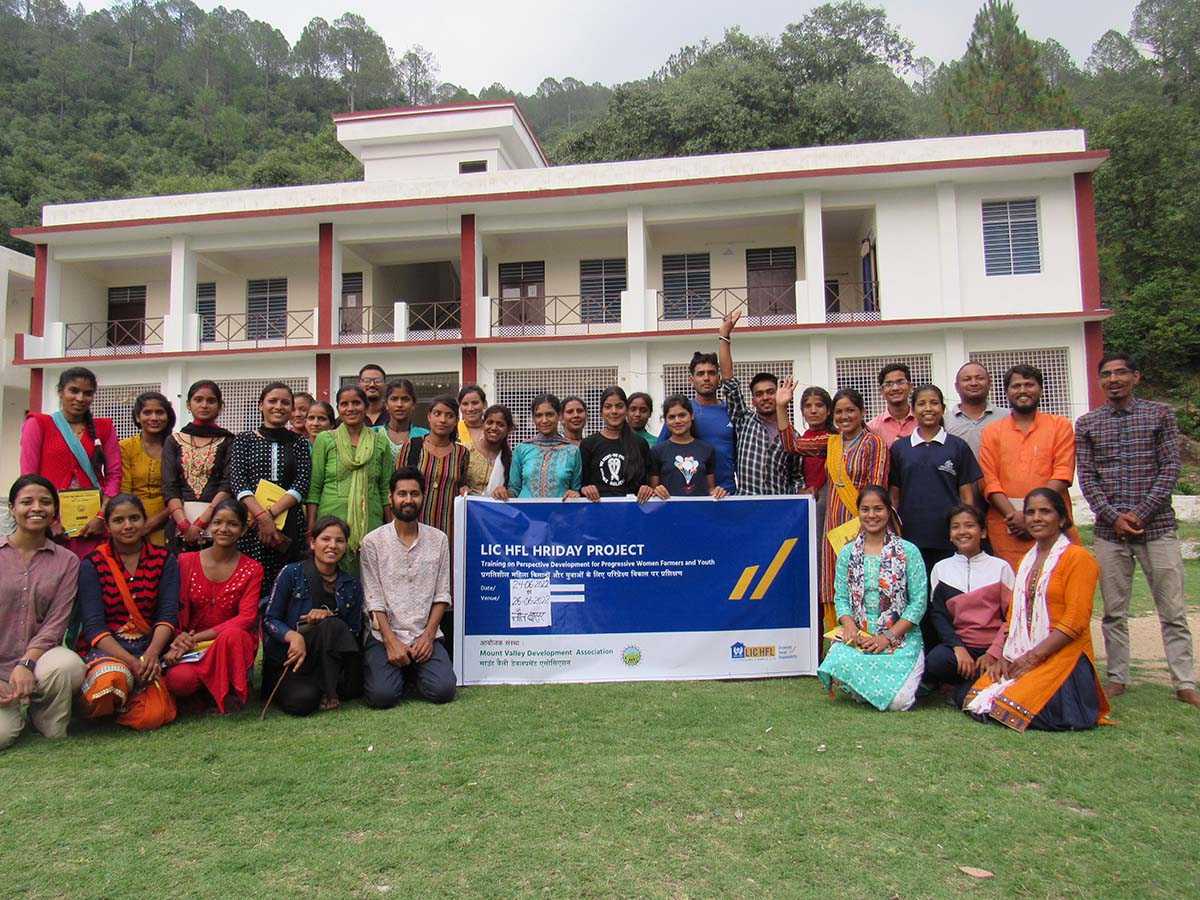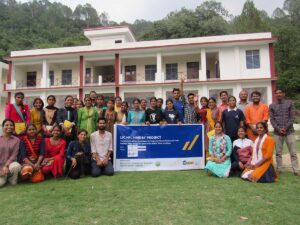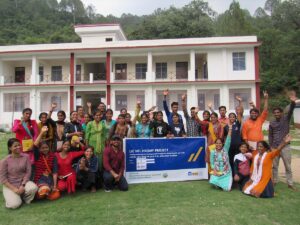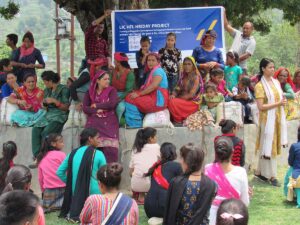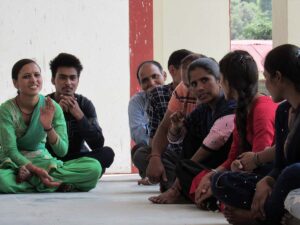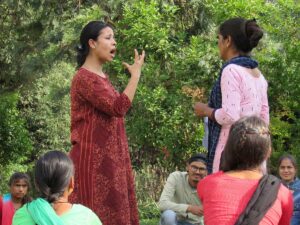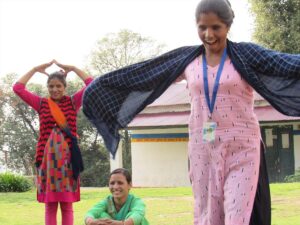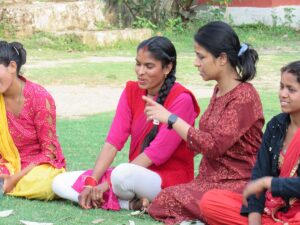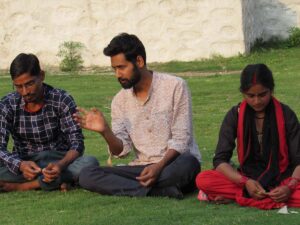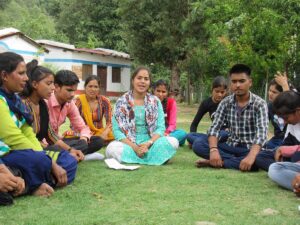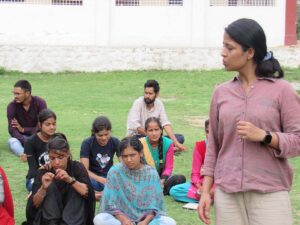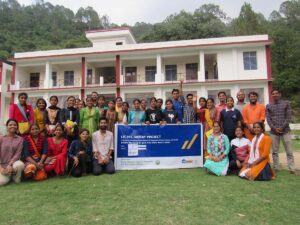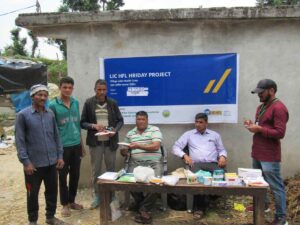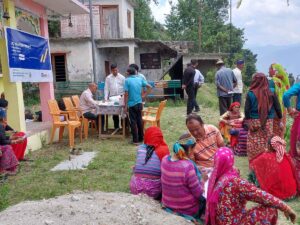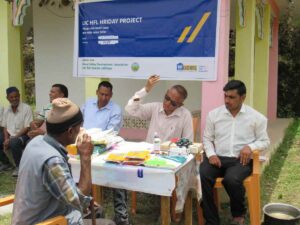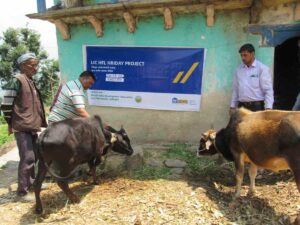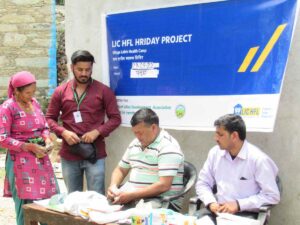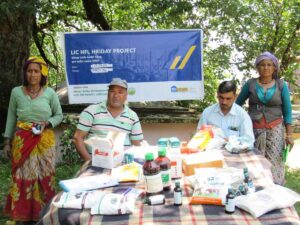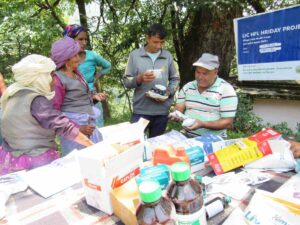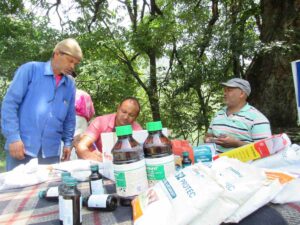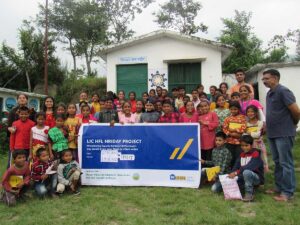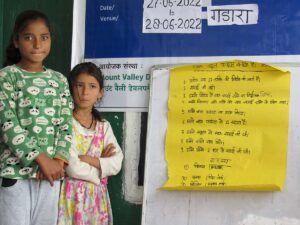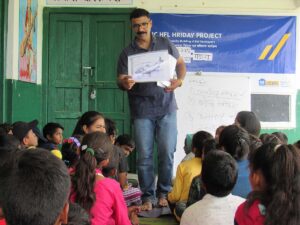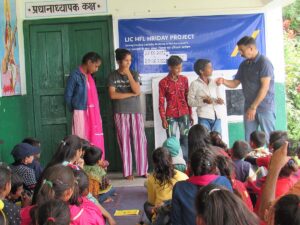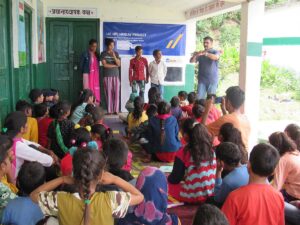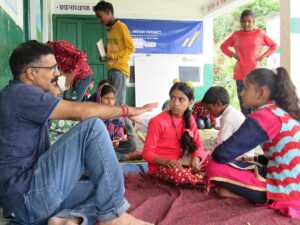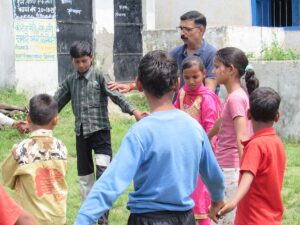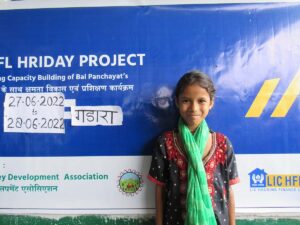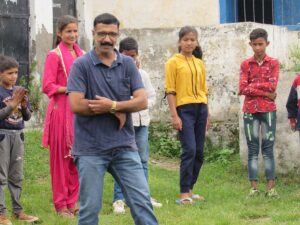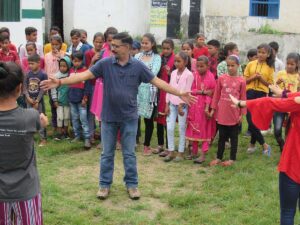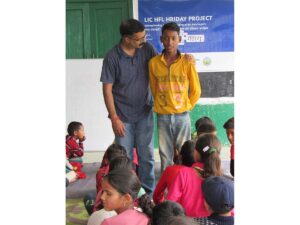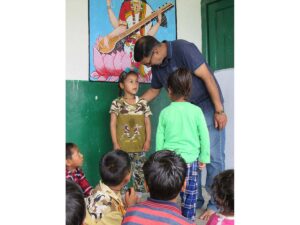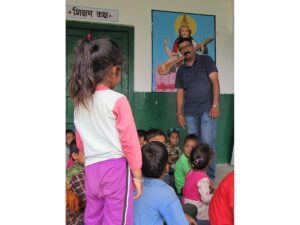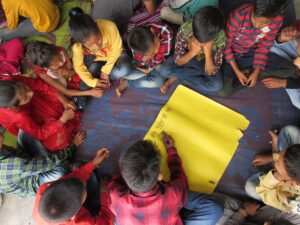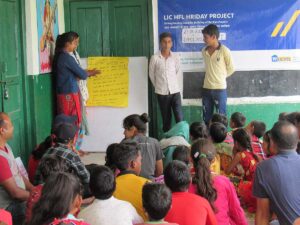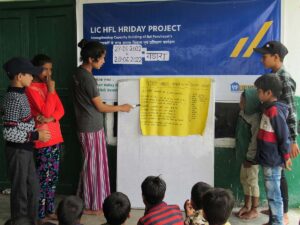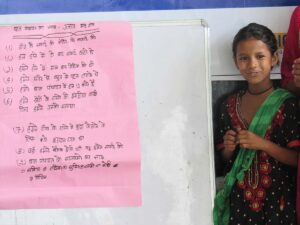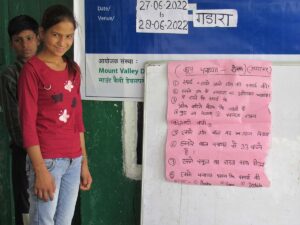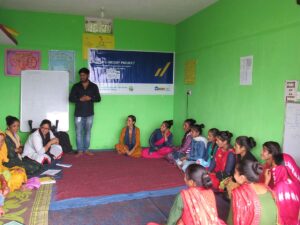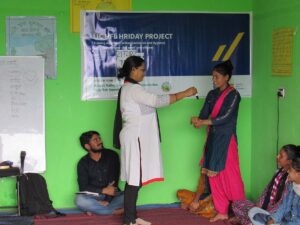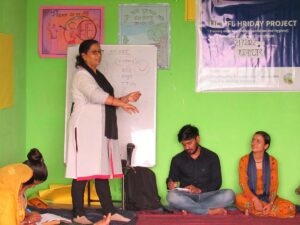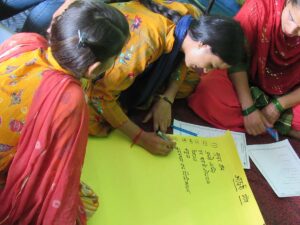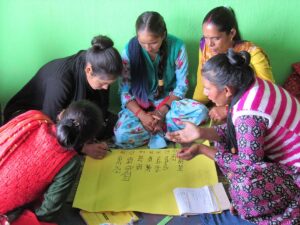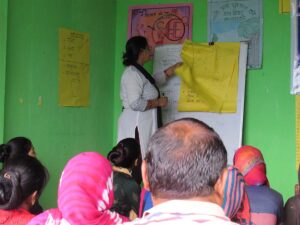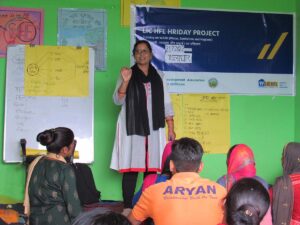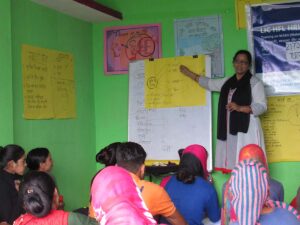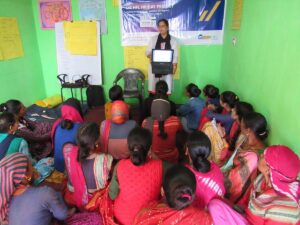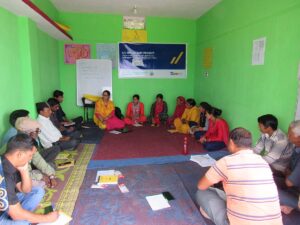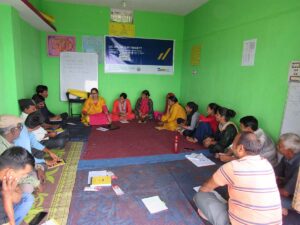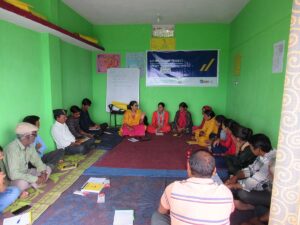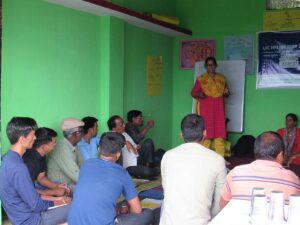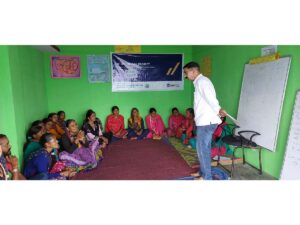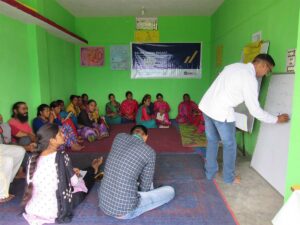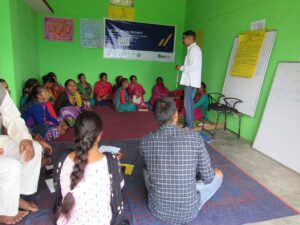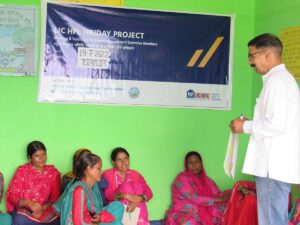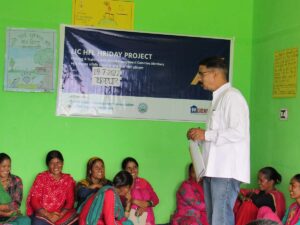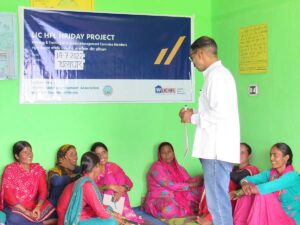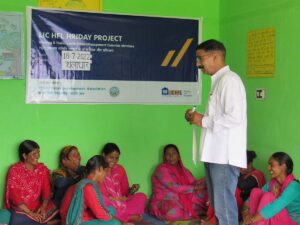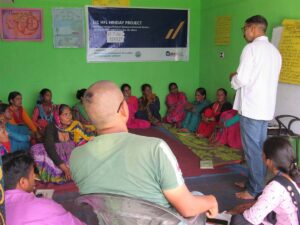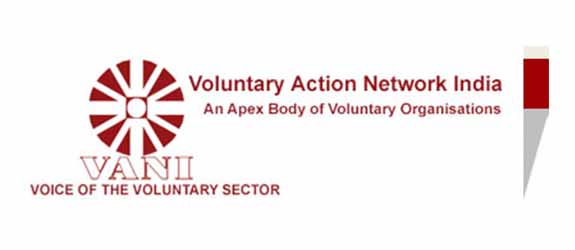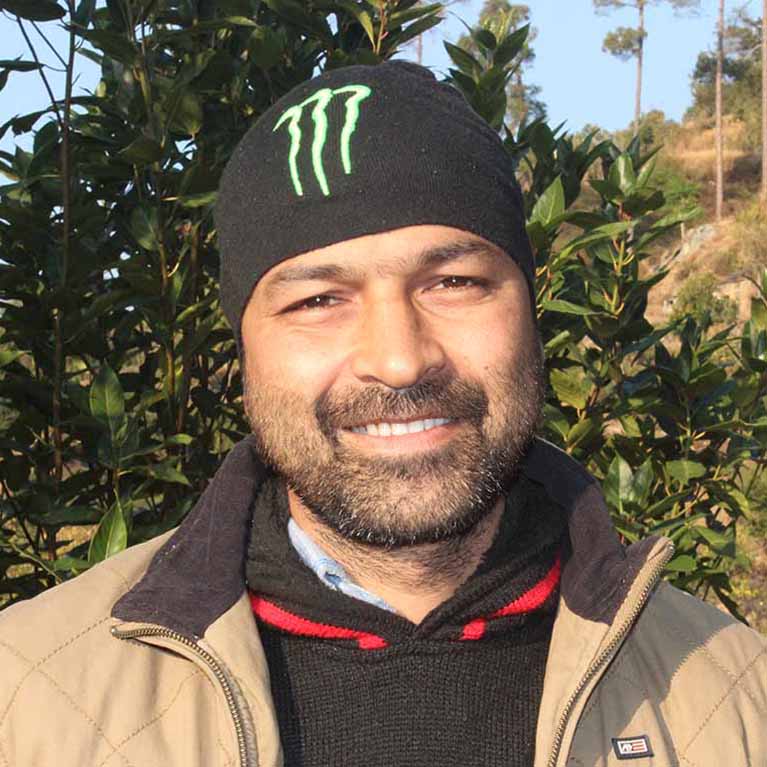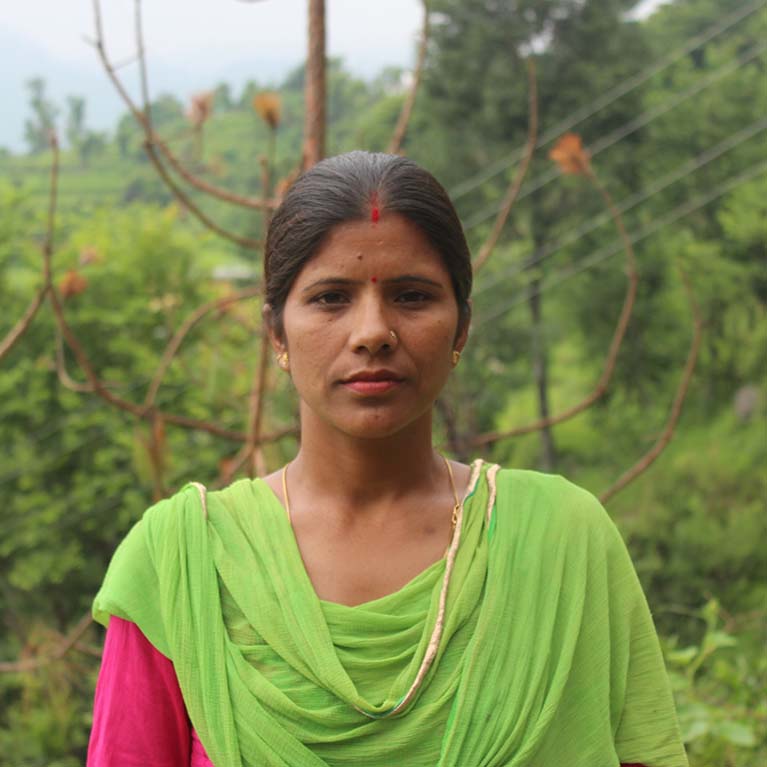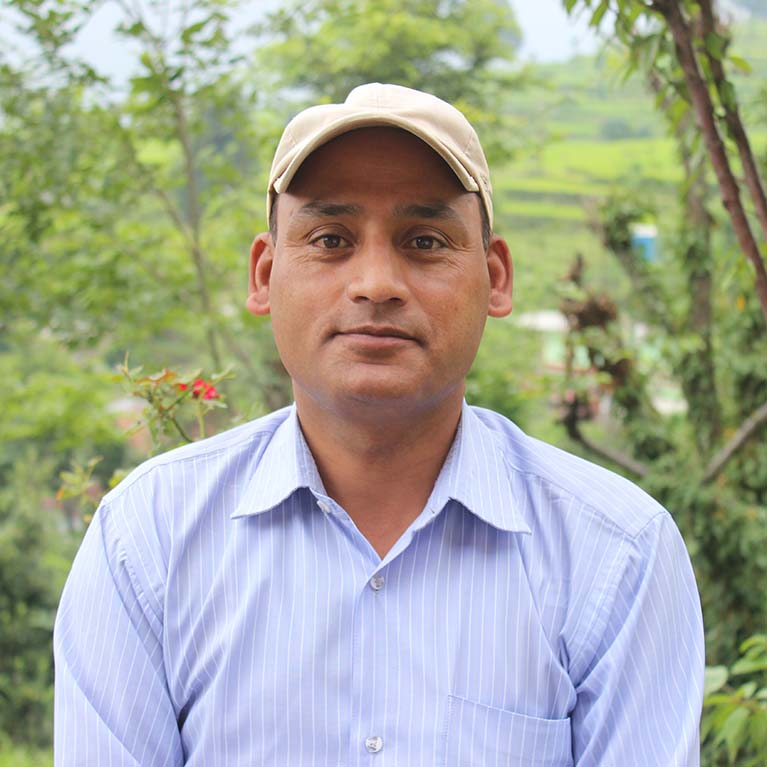Sustainable agriculture integrates three main goals, environmental health, economic profitability and social and economic equity. It is a way to meet society’s present food and textile needs, without compromising the ability for current or future generations to meet there needs. It can be based on an understanding of ecosystem services. When agricultural operations are sustainably managed, they can preserve and restore critical habitats, help protect watersheds, and improve soil health and water quality.
Benefits of Sustainable Agriculture: A Holistic Approach
Sustainable agriculture offers multitude advantages, each contributing to a more balanced and resilient agricultural system. Rural development NGOs promote sustainable agricultural practices as they offer wide array of benefits.Here, we elaborate on the key benefits of sustainable agriculture:
1. Help Maintain Biodiversity:
Sustainable agriculture is a guardian of biodiversity, actively contributing to the preservation and flourishing of diverse ecosystems:
i) Crop Diversity:
One of the benefits of sustainable agriculture is that it encourages the cultivation of a wide range of crop varieties. Unlike monoculture farming, which relies on a single crop, diversified planting provides refuge and sustenance for numerous plant species. This diversity creates vibrant ecosystems within the field, attracting a variety of pollinators, insects, and microorganisms. These diverse plant communities also support a wide array of herbivores, further enriching biodiversity.
ii) Habitat Preservation:
Sustainable farming advantages often incorporates the preservation of natural habitats within or around farmlands. These preserved areas serve as sanctuaries for native flora and fauna, including various plant species, insects, birds, and mammals. By safeguarding these habitats, sustainable agriculture creates safe havens for biodiversity to thrive, promoting balanced ecosystems.
iii) Reduced Chemical Use:
Other benefit of sustainable agriculture is that, it minimizes the reliance on synthetic pesticides and fertilizers, which can have detrimental effects on non-target species. By decreasing chemical inputs, sustainable practices protect beneficial insects, such as pollinators and natural pest predators. This protection allows these essential species to flourish and contribute to overall biodiversity.
iv) Cover Crops and Crop Rotation:
Sustainable agriculture emphasizes practices like cover cropping and crop rotation, which enhance soil health and reduce the risk of soil-borne diseases. Healthy soils teem with a multitude of microorganisms and invertebrates crucial for nutrient cycling and plant growth, further promoting biodiversity.
v) Integrated Pest Management (IPM):
An integral part of sustainable agriculture, IPM focuses on monitoring and selective interventions to control pests. Instead of indiscriminate pesticide use, IPM seeks to balance pest populations, minimizing harm to non-target species and fostering a more harmonious ecosystem within the farming environment.
vi) Genetic Diversity Preservation:
Benefits of sustainable agriculture often includes the conservation of traditional and heirloom crop varieties. These varieties may carry unique genetic traits vital for crop resilience in changing environmental conditions. By preserving genetic diversity, sustainable agriculture safeguards the future of numerous plant species.
2. Make the Most Effective Use of Non-Renewable and Farm Resources:
Sustainable agriculture optimizes resource utilization, making efficient use of both non-renewable and farm resources:
i) Precision Farming Techniques:
Sustainable agriculture leverages precision farming technologies, such as GPS-guided equipment and soil sensors. These tools enable farmers to apply resources like water, fertilizers, and pesticides with pinpoint accuracy. This targeted approach reduces resource waste, ensuring that inputs are used only where needed.
ii) Organic Matter Management:
Effective organic matter management, including practices like composting and mulching, improves soil structure and nutrient retention. Healthy soils can efficiently store and release essential elements to plants, reducing the need for excessive fertilization. This is also among the important benefits of sustainable agriculture.
iii) Efficient Irrigation Practices:
Sustainable agriculture advantages include prioritizing efficient irrigation methods, such as drip and micro-irrigation systems. These techniques deliver water directly to the root zone of plants, minimizing water wastage through evaporation or runoff.
iv) Local and Sustainable Sourcing:
Sustainable agriculture often involves sourcing inputs locally, reducing the environmental footprint associated with transportation. This approach not only supports local economies but also minimizes the carbon footprint of farming operations.
3. Maintain the Economic Viability of Farm Operation:
The benefits of sustainable agriculture includes that farms remain economically viable while implementing practices that benefit the environment:
i) Niche Markets:
Sustainable agriculture often opens doors to niche markets that value environmentally friendly and locally sourced products. These markets can provide farmers with higher returns for their produce, enhancing the economic viability of their operations.
ii) Reduced Input Costs:
By reducing the reliance on synthetic chemicals and excessive fertilizers, sustainable agriculture lowers input costs. This financial relief can significantly impact the economic sustainability of farms, especially small-scale operations.
iii) Minimized Environmental Risks:
One of the key benefits of sustainable agriculture practices is that, it reduces the environmental risks associated with farming, such as soil erosion, water contamination, and habitat destruction. This reduces the potential for costly environmental damages or regulatory fines that could negatively impact farm economics.
4. Rejuvenate the Original Growth of the Plant:
Sustainable agriculture advantages includes that it endeavors to rejuvenate and enhance the natural growth of plants:
i) Soil Health Improvement:
Prioritizing soil health through organic matter enrichment, reduced chemical usage, and enhanced nutrient management is one of the important benefits of sustainable agriculture. Healthy soil provides an ideal environment for plant roots to access essential nutrients and water. Consequently, crops grow robustly, mirroring their natural, vigorous growth patterns.
ii) Reduced Chemical Dependency:
Sustainable agriculture minimizes the use of synthetic pesticides and synthetic fertilizers. By opting for organic and eco-friendly alternatives, it ensures that plants are not subjected to the stress and damage often caused by chemical exposure. This reduction in chemical dependency fosters healthier plant growth.
iii) Crop Rotation:
Sustainable agriculture practices like crop rotation change the types of crops grown in specific fields over time. This technique helps prevent soil depletion and the buildup of crop-specific diseases, creating improved conditions for plant growth.
iv) Biodiversity Promotion:
Sustainable agriculture incorporates diverse crop varieties and encourages the growth of cover crops. This biodiversity promotes symbiotic relationships among plants and beneficial microorganisms, enhancing overall plant health and vigor.
PRINCIPLE OF SUSTAINABLE AGRICULTURE
1. Protecting and Improving Natural Resources:
Sustainable agriculture recognizes the inherent value of our natural resources and takes deliberate steps to safeguard and enhance them making it one of the important benefits of sustainable agriculture.
i) Soil Health Preservation
Practices like reduced tillage, cover cropping, and organic matter enrichment are employed to protect and rejuvenate soil health. These efforts not only prevent soil erosion but also foster a nurturing environment for plants growth.
ii) Water Conservation
Efficient water management is integral to sustainable agriculture. Techniques like drip irrigation and rainwater harvesting are embraced to minimize water wastage. This not only conserves a precious resource but also prevents water pollution, benefiting ecosystems downstream.
iii) Biodiversity Promotion
Biodiversity is the cornerstone of healthy ecosystems. One of the key benefits of sustainable agriculture is that it actively encourages diverse planting, preserving natural habitats, and reducing chemical use. These practices attract beneficial insects, pollinators, and foster a balanced ecosystem within farmlands.
2. Enhancing Rural Development and Social Welfare
Sustainable agriculture goes beyond crop yields; it aims to improve the quality of life for those involved in farming. Rural development NGOs also promote sustainable agriculture.
i) Promoting Rural Development
By promoting sustainable practices, rural communities are empowered to take control of their agricultural destinies. This self-reliance leads to economic stability and a sense of ownership in rural areas.
ii) Access to Nutrient-Rich Food
Sustainable agriculture often results in nutrient-dense crops. This translates to better access to healthy food, benefiting not just farmers but the entire community.
iii) Cultural Preservation
Sustainable agriculture respects local traditions and heirloom crop varieties. By preserving cultural heritage, it contributes to the enrichment of rural development.
3. Improving the Efficiency of Resource Utilization
One of the key benefits of sustainable agriculture is efficiency and making the most out of every resource.
i) Precision Farming
Cutting-edge technology is harnessed for precision farming. GPS-guided tractors, soil sensors, and data analytics are used to optimize resource use. This ensures that inputs like water, fertilizers, and pesticides are applied with pinpoint accuracy, reducing waste.
ii) Organic Matter Management
Effective organic matter management, including composting and mulching, enhances soil fertility and structure. This enables the soil to retain and release nutrients efficiently, reducing the need for excessive fertilization.
iii) Integrated Pest Management (IPM)
IPM is the art of pest control without the unnecessary use of chemicals. By monitoring and selectively intervening, sustainable agriculture maintains a balanced ecosystem where natural predators keep pest populations in check.
These principles are not just guidelines; they are a path to a thriving tomorrow where farming nourishes both people and the planet.
Methods of Sustainable Agriculture
Sustainable agriculture is a beacon of hope for the future of farming, emphasizing practices that enrich both the soil and the human spirit. The key methods of sustainable agriculture and how they cultivate resilience, diversity, and ecological harmony are explained as below.
i) Permaculture: Designing with Nature
Permaculture, short for “permanent agriculture” or “permanent culture,” is a regenerative approach to farming that mimics natural ecosystems. It centers on careful design, emphasizing synergy between plants, animals, and landscapes.
Permaculture principles include designing diverse and resilient systems, minimizing waste, and building healthy soil. By creating food forests, incorporating rainwater harvesting, and practicing “no-dig” gardening, permaculture fosters self-sufficiency and sustainable abundance.
ii) Cover Crops: Nature’s Blanket
Cover crops, also known as green manure, are non-commercial crops planted to cover and protect the soil between main crops. They act as a living mulch, preventing erosion, suppressing weeds, and improving soil health.
Legumes like clover and vetch fix nitrogen in the soil, reducing the need for synthetic fertilizers. Meanwhile, deep-rooted plants like radishes break up compacted soil, enhancing water infiltration and aeration. The result is healthier, more fertile soil that supports robust crop growth.
iii) Polyculture Farming: Nature’s Harmony
Polyculture farming is a departure from monoculture, where multiple crop species are cultivated together. This mimics natural ecosystems, reducing the risk of crop failure due to pests or diseases.
Diverse plant communities promote nutrient cycling, deter pests naturally, and maximize the use of sunlight and soil resources. For instance, planting corn alongside beans and squash creates the “Three Sisters” system, where each crop supports the others, resulting in healthier and more abundant yields.
iv) Natural Pest Predators: Allies in Agriculture
Key benefits of sustainable agriculture include seeking harmony with nature, including harnessing the power of beneficial insects and organisms as natural pest control.
Ladybugs, lacewings, and parasitic wasps are nature’s warriors against crop-damaging pests. By creating habitat for these allies and reducing pesticide use, sustainable agriculture maintains a delicate balance where predators keep pest populations in check.
v) Soil Enrichment: Nourishing the Earth
Soil is the foundation of agriculture, and sustainable practices prioritize soil health. Soil enrichment involves adding organic matter like compost, leaf mulch, and cover crop residues to improve soil structure and fertility.
Healthy soil teems with beneficial microorganisms, earthworms, and other essential life forms. They break down organic matter, release nutrients to plants, and create a stable, crumbly soil structure that retains moisture and resists erosion.
vi) Crop Rotation:
Crop rotation is a time-honored practice where different crops are planted in the same field over time. This breaks the cycle of pests and diseases specific to certain crops, enhances nutrient cycling, and promotes soil health. For example, legumes like peas or beans are rotated with heavy-feeders like corn or tomatoes. The legumes fix nitrogen in the soil, enriching it for the subsequent crops.
Conclusion:
These methods and benefits of sustainable agriculture are a testament to humanity’s ability to work in harmony with nature. They cultivate resilience, embrace diversity, and nourish both the land and those who tend it. By adopting these practices, we can build a more sustainable and regenerative agricultural future that ensures food security and environmental health for generations to come.
